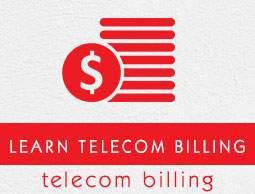Telecom Billing - Introduction
Sending voice, data, picture, fax, etc., from one point to another using electronic media is termed as telecommunication and in short 'telecom'. Examples include Phone, Radio, Television and Internet. The medium of transmission includes Wire (Copper), Fiber Optics, Ether (wireless), Radio towers, Microwave, Satellite, etc.
Now, let us list down a few international telecom operators, who are providing satisfactory telecom services to their customers −
- Verizon
- Vodafone
- Airtel
- TATA
- Etisalat
- Qtel
Let us also list down a few basic telecom services being provided by various well known telecom operators −
- Voice Call
- Fax Service
- SMS & MMS
- Internet Connection
- Data Download and Upload
- Video Conferencing
- IP based services, i.e., voice over IP or VPN
Telecom operators are charging their customers in various ways, but there are two mainly used parameters to charge a customer −
Rental Charges − These are the charges taken from the customers on monthly basis against the service provided. For example, your telephone monthly charges would be $5.00 regardless you use it or not.
Usage Charges − These are the charges taken from the customers based on the service utilization. For example, you would be charged for all the calls you made or data downloaded using your phone.
Apart from monthly rental and usage charges, operators may charge you for service initiation, installation, service suspension or termination as well.
Telecom Billing is a process of collecting usage, aggregating it, applying required usage and rental charges, and finally generating invoices for the customers. Telecom Billing process also includes receiving and recording payments from the customers.
Billing Systems
There could be very complex charging scenarios, which would be difficult to handle manually. There are state-of-the-art Billing Systems available in the software market that can handle billing tasks very efficiently and provide lots of flexibilities to service providers to offer their services with different price structures.
Billing systems are often viewed as accounts receivable, as the billing system assists in the collection (receipt) of money from customers. Billing systems are also part of accounts payable (for inter-carrier settlements), as customers often use services from other companies such as wireless roaming, long distance, and call completion through other networks.
Billing systems are high end, reliable, and expensive softwares, which provide various functionalities. Here is a list of most important features but not limited to the following −
Rating & billing − It involves rating the products or services usage and producing monthly bills.
Payment processing − It involves posting of the customer's payments into his/her account.
Credit control and collections − It involves chasing the outstanding payments and taking appropriate actions to collect the payments.
Disputes and adjustments − It involves recording customer's disputes against their bills and creating adjustment to refund the disputed amount in order to settle the disputes.
Pre-pay and post-pay services − It involves supporting both the pre-paid and the post-paid customer bases.
Multilingual & multiple currencies − Multilingual and multiple currencies support is required if the business is spread across the globe and have multinational customers or else if the government regulations demand for it.
Inter-carrier settlements − It involve sharing of revenue between carriers that provide services to each other's customers.
Products & services − This involves providing flexible way to maintain various products and services and sell them individually or in packages.
Discount applications − This involves defining various discount schemes in order to reduce customer churn and attract and increase customer base.
Billing Types
When you drill down billing subject, it becomes more complicated. I would try to cover most of the concepts later in this tutorial, but first, let us have a broad view of the widely used billing types −
Pre-pay Billing − A billing mechanism where customer pays in advance and after that starts using a service. Usually, prepaid customers do not receive any invoice and they are charged in real time by the highly available billing systems called 'IN'(Intelligent Network).
Post-pay Billing − This is the conventional billing, which is coming for many years. Here, customers buy products and services and use them throughout the month, and by end of the month, invoices are generated by the service provider and sent those invoices to the customers to make their due payment.
Interconnect Billing: The network operator is usually financially responsible for services provided to its customers by other networks regardless of whether or not the customer pays for the service. Interconnect billing is related to inter-carrier or sometime called partner settlements.
Roaming Charges − When a customer goes from one network operator's coverage area to another operator's coverage area, the first operator would pay marginal charges to the second operator to provide services to their customers. Such type of charges are settled through roaming billing. This settlement is done as per TAP3 protocol, which we will discuss in the upcoming chapters.
Convergent Billing − Convergent billing is the integration of all service charges onto a single customer invoice. Convergent billing means creating a unified view of the customer and all services (Mobile, Fixed, IP, etc.,) provided to that customer.
Billing System Vendors
Billing Systems are the backbone of any telecom operator. If operators do not have a strong billing system, then it would not be possible for them to offer their products and services with attractive promotions and deals and ultimately they can not stand in today's competitive and dynamic market.
You can find thousands of vendors, who are selling their billing products with a claim of lot of features, but there are a few in the market which are really good and most commonly used. Some of the good billing systems are listed below −


